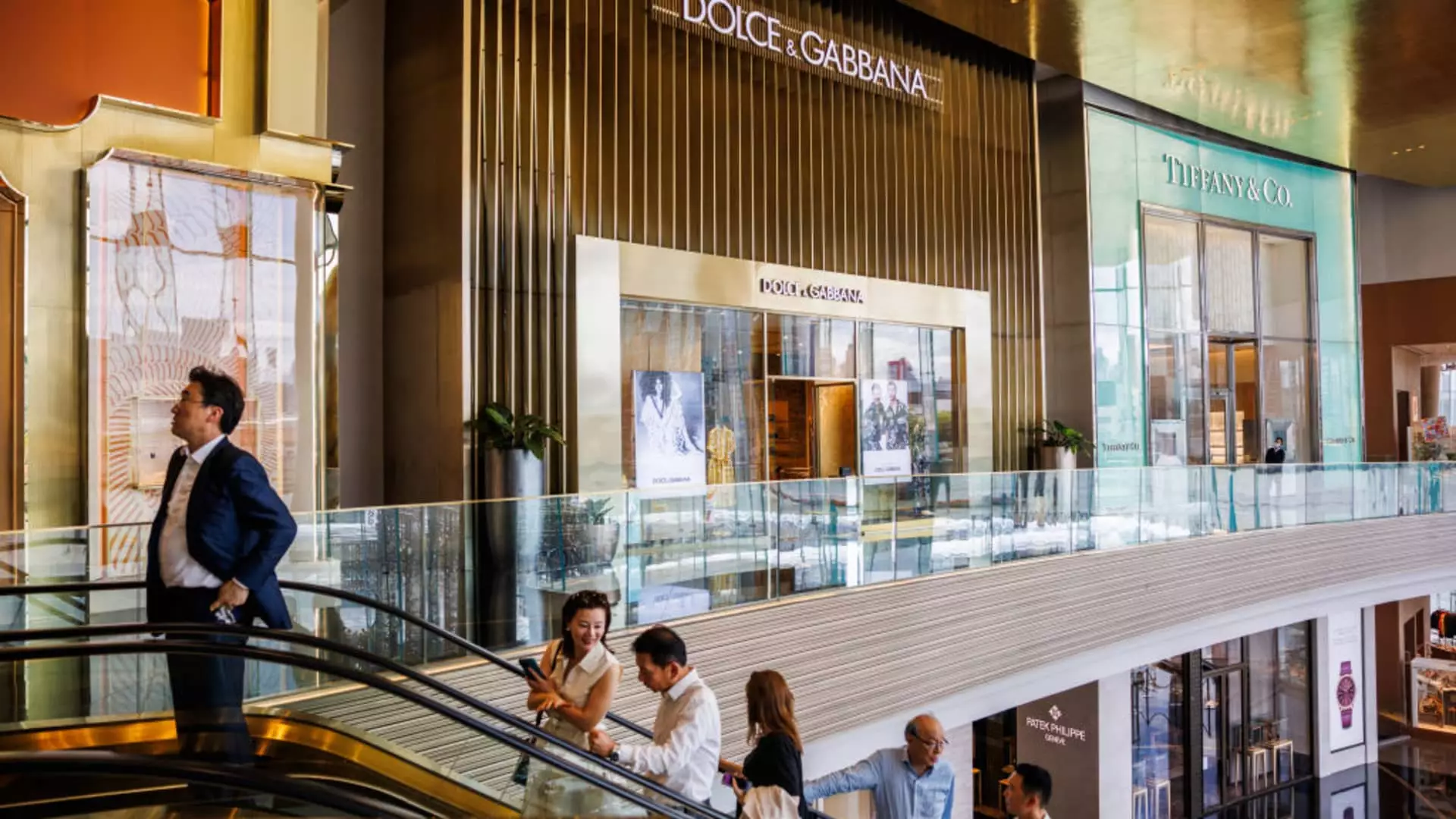The luxury goods sector, long viewed as a robust indicator of economic resilience, is undergoing a profound transformation. In a departure from its relentless upward trajectory, the market for personal luxury goods—spanning categories such as high-end clothing, accessories, and cosmetics—faces its first notable decline since the Global Financial Crisis. This trend is exacerbated by a cocktail of macroeconomic uncertainties and a deceleration in consumer spending, particularly in China, as highlighted by the latest insights from Bain & Company’s annual luxury report.
In stark contrast to the vibrant growth witnessed over the past fifteen years, the luxury sector is anticipated to contract by approximately 2% throughout the year. This contraction is particularly significant when considering the context; benchmarks of economic health and consumer confidence have shifted dramatically in the wake of COVID-19. Rising costs and weakening customer loyalty have prompted many to reconsider their spending habits, sparking a cautious approach toward renowned high-end brands.
Global economic instability remains a pervasive concern, with luxury brands like LVMH, Burberry, and Kering experiencing revenue misses that reflect this uncertainty. The Chinese market, once regarded as the linchpin of luxury growth, has notably faltered, with Bain reporting a sharp decline in domestic spending—indicative of plummeting consumer confidence and a sluggish economic recovery post-pandemic. This contraction extends beyond mere statistics; it threatens the very fabric of relationships luxury brands have built with their consumers.
The findings point to a concerning trend: even established names in luxury, such as Richemont, which previously appeared resistant to market fluctuations, have reported declines in sales. This evolution signifies a decline in brand loyalty and affluence-driven purchasing, raising alarms about the sustainability of current luxury marketing strategies. Bain’s observations signal that brands may need to recalibrate their approaches to engage a consumer base that is increasingly pursuing more experiential and authentic relationships with their favorite labels.
Emerging Opportunities Amidst Challenges
Despite the overarching downturn, there remain pockets of growth within the luxury sector. For instance, categories encompassing luxury automobiles, high-end travel, fine wines, and gourmet dining have demonstrated resilience. Travelers are increasingly directing their expenditures toward meaningful experiences, underscoring a shift from material acquisitions to the pursuit of personal fulfillment and wellness. This evolving preference toward experience over possessions is redefining luxury consumption and reshaping brand strategies.
Moreover, there is a noticeable uptick in demand for smaller luxury items, like beauty products and eyewear. The report suggests that consumers are opting for “small indulgences” as a way to maintain a connection with luxury without committing to major purchases. This trend is particularly relevant for brands seeking to cultivate engagement through accessible luxury offerings.
One of the key challenges luxury brands now face is addressing the shifting expectations of younger consumers, particularly Gen-Z. Over 50 million individuals have distanced themselves from the luxury market, signaling an urgent need for brands to adapt their value propositions. Claudia D’Arpizio of Bain & Company emphasizes that to rekindle relationships with this important demographic, brands must innovate through creativity and expand their cultural dialogues.
The focus should shift toward cultivating deeper, authentic connections and surprising top customers with personalized experiences. This prioritization of meaningful interactions over sheer transactional encounters is crucial in an era where consumer preferences are fueled by social media, digital engagements, and individualistic values.
As we look to the future, the report from Bain suggests a possibility of recovery in the latter half of the coming year, contingent on a stabilization of economic conditions. Encouraging signs from markets in Europe and the U.S. provide a glimmer of hope for the luxury sector. However, a long-lasting recovery will hinge on brands’ ability to implement effective strategies that resonate with the evolving demands of consumers, particularly the younger generation.
The luxury goods market stands at a crossroads, challenged by unprecedented changes yet still brimming with potential for innovation and growth. The path forward requires brands to embrace transformative thinking, ensuring they remain relevant and resonant in a fast-changing landscape. As they adapt, those that successfully meld tradition with contemporary consumer sensibilities will undoubtedly emerge stronger from this tumultuous period.

Leave a Reply